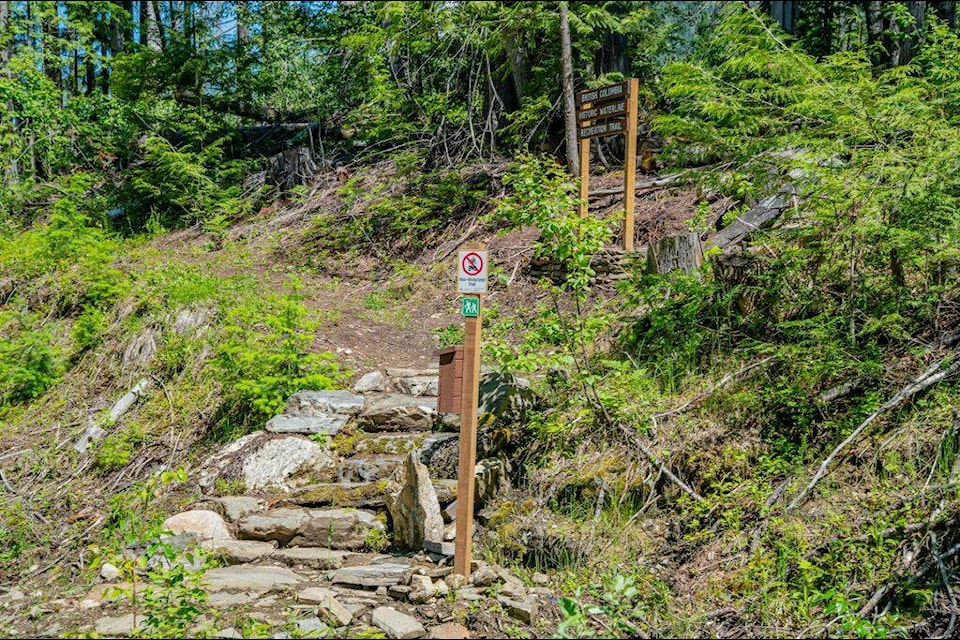Submitted
Fascinating discoveries—such as remnants of a turn-of-the-20th-century waterline, log cabin, and dam—make the Riondel Historic Waterline Trail more than a place to walk.
By restoring and enhancing this four-kilometre trail, both history and recreation have been brought to the forefront.
“With a need for opportunities to maintain health and vitality, this trail development is an excellent addition to our trail networks on the East Shore,” says Farley Cursons, executive director of the East Shore Trail and Bike Association, the project overseers.
“With the historical element of the trail, we have already had our local school come out for a field trip. Every community should have a signature trail and this one, above Riondel, is one to be very proud of.”
The trail, used in mining operations from 1905 until the mid-1930s, was identified over 10 years ago by the Regional District of Central Kootenay as a possible community asset.
However, after the association was asked by locals to clear downed trees, the district realized the trail would also be a significant safety hazard without major work to its surface and surrounding area.
“Several kilometres of rolled rusty wires and connectors were beside and under the trail,” says Cursons.
That’s when Columbia Basin Trust (Trust) stepped in with funding to support the regional district project. Hazards were reduced, creating a safer experience for users.
The Trust says that by helping residents maintain healthy lifestyles, all while engaging in the region’s heritage, trail projects like this help the Trust meet a priority of people in the region; to promote community well-being.
Complete with two major footbridges outfitted with hand railings and three simple boardwalks, the trail can be accessed from Riondel North Road. This route features a longer, mostly uphill experience.
Or, there’s the Tam O’Shanter Forest Service Road. This route offers a shorter hike into the creek canyon, home to most of the historical features.
The oldest items date back to 1905 when Bluebell Mine, founded in the 1820s, was revitalized by the Canadian Metal Company under the direction of Count Edouard Riondel, president of the French-owned company.
To operate the mill and pumps, located in Riondel, a four-kilometre wood stave pipeline was built for a gravity-fed system, and circular flanges, which were rock-bolted to the canyon walls to hold the suspended pipeline, can still be viewed by trail users today.
Other interesting features hikers can see include the intake of the old dam on Tam O’Shanter Creek, wooden cribbing, rock walls, and the remains of an old cedar log cabin, named Tam O’Shanter Hotel by the workers who were stationed there to maintain the water flow through the pipeline.
“This project has been an amazing opportunity for our area,” says Cursons. “The Trust grant helped us create our own unique recreation trail destination that is quickly being discovered.”
Since 2020, the Trust has supported work on 380 kilometres of trails.
